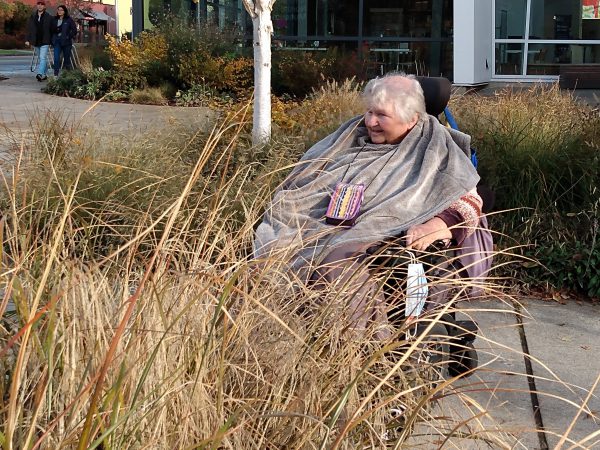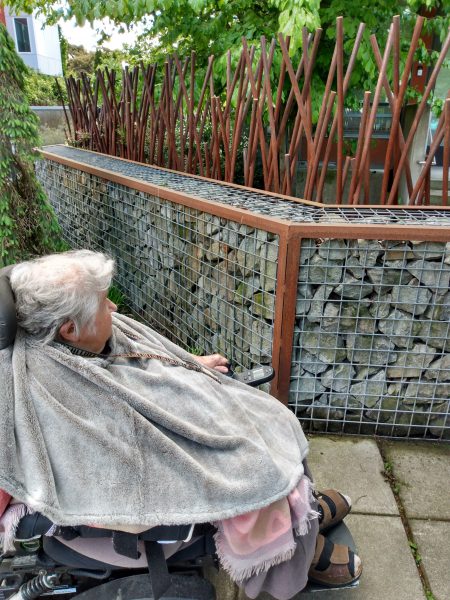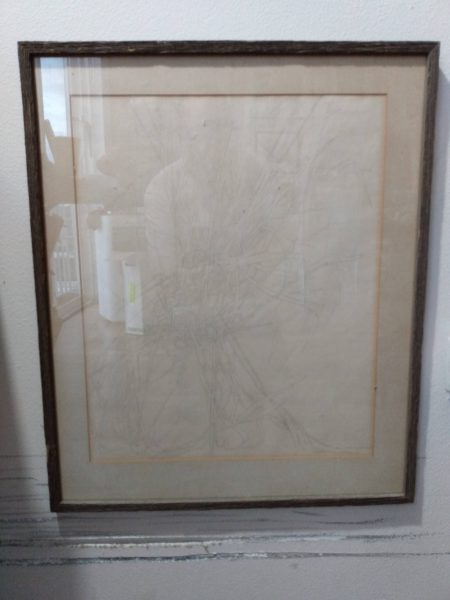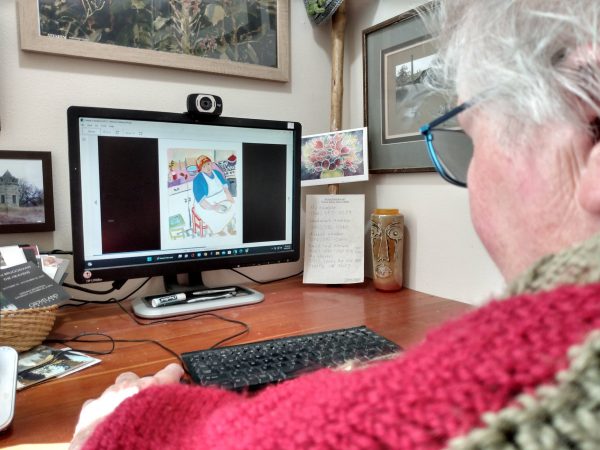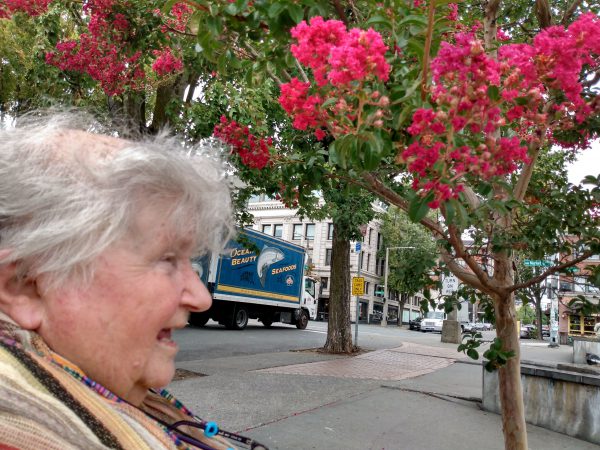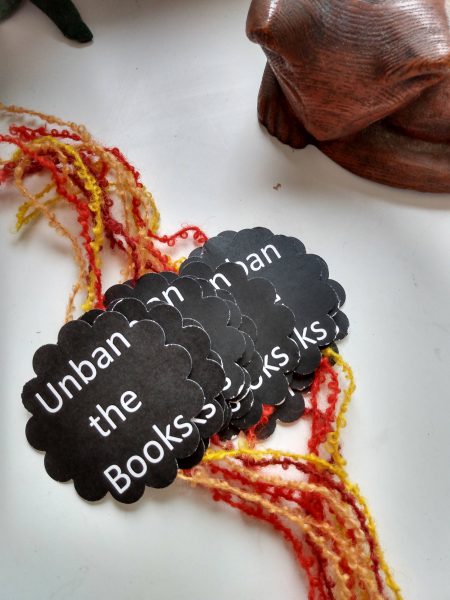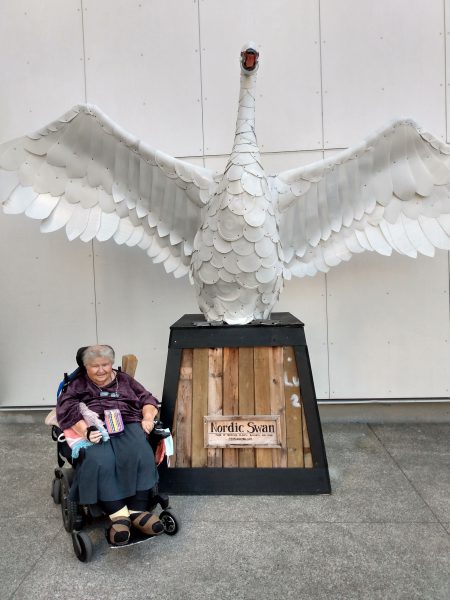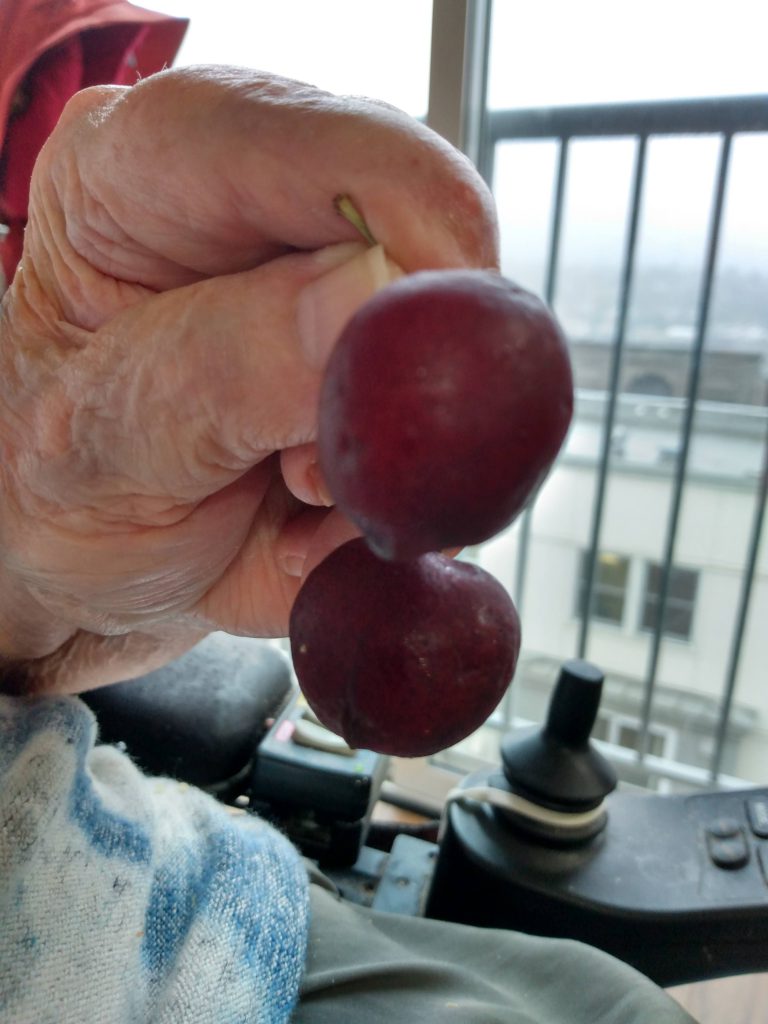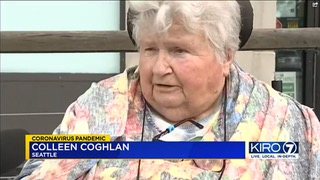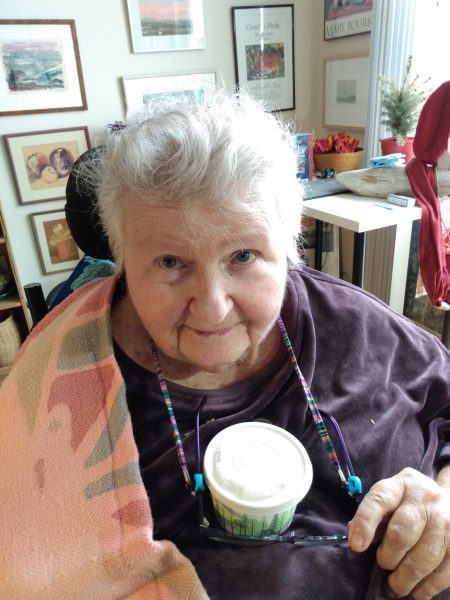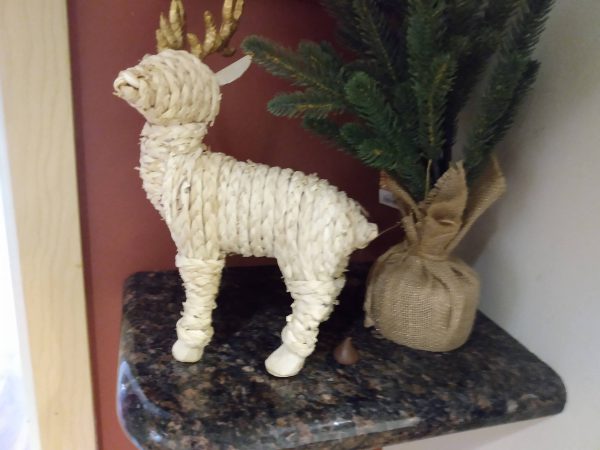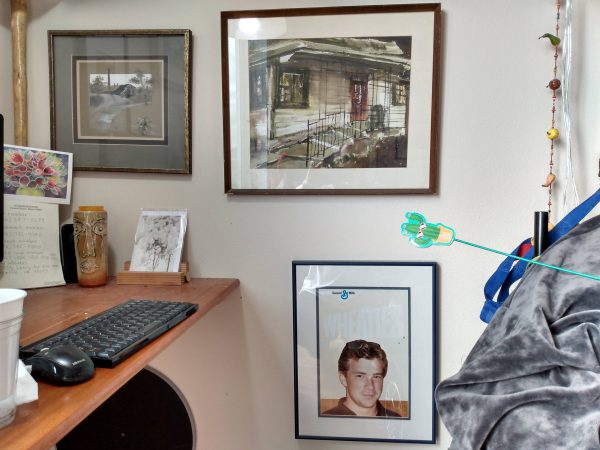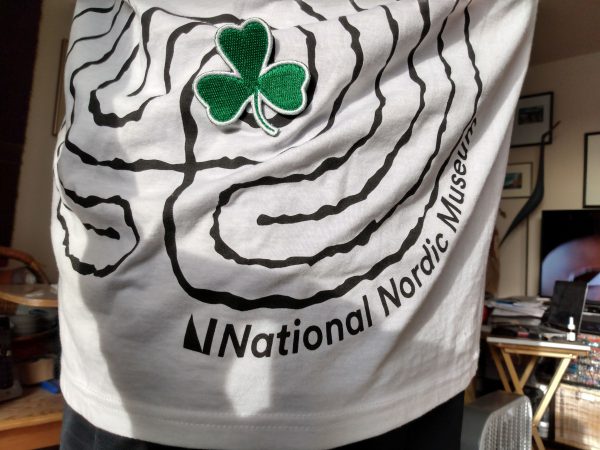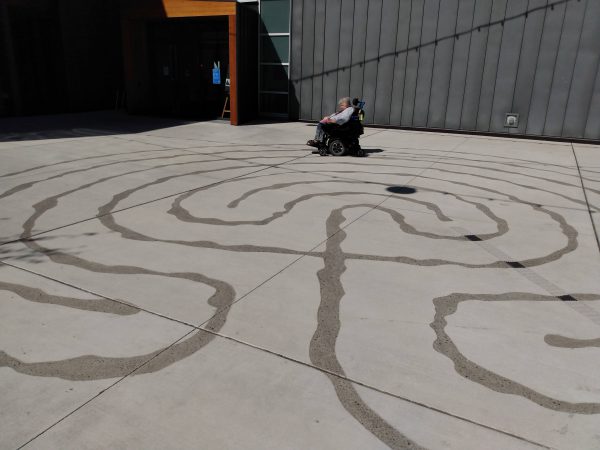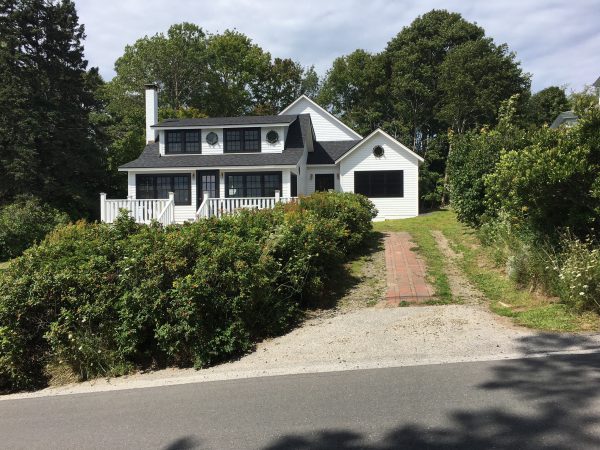UPDATE AND REWRITE…
This post is later than late because WordPress changed itself, so I sent it out on email to my 4 faithful readers, but Charlie fixed this latest catastrophe, as he always can and does, and I am, finally, sufficiently remorseful and peppier, too, and some noteworthy thoughts don’t die. So this is a rewrite. And I am looking into Substack.
Poetry Club met today, always a good time. Intrepid Convener Gary’s assigned task was to “choose and bring to read your 3 favorite poems.” Today, for me, that would be poems appreciating libraries, as written by the poets, or as understood, and, sometimes,” amended” by me. I figured that, with just a few poetic fiddlings, I could recognize the librarians in my life, especially those of my early freedom-to-read good times in Wahpeton’s Leach Public Library. And I could subtly expose Gov. DeSantis as a ding dong. But is fiddling legal? My fellow early breakfast eater and lawyer, Gil, said, “Go for it.” So I have. [I like Gil.] These 3 poems are my current favs. My “amendments” are in boldface.
…………………………………………………………………………………
As my dad used to say of my writing assignments, “This is good. Let’s make it even better.” I tried to do that here by amending the poem to end on a more promising note.
To David, About His Education by Howard Nemerov
[ from The Collected Poems of Howard Nemerov. © University of Chicago Press, 1972.]
The world is full of mostly invisible things,
And there is no way but putting the mind’s eye,
Or its nose, in a book, to find them out,
Things like the square root of Everest
Or how many times Byron goes into Texas,
Or whether the law of the excluded middle
Applies west of the Rockies. For these
And the like reasons, you have to go to school
And study books and listen to what you are told,
And sometimes try to remember. Though I don’t know
What you will do with the mean annual rainfall
On Plato’s Republic, or the calorie content
Of the Diet of Worms, such things are said to be
Good for you, and you will have to learn them
In order to become one of the grown-ups
Who sees invisible things neither steadily nor whole,
But keeps gravely the grand confusion of the world
Under his hat, which is where it belongs,
And teaches small children to do this in their tum.
Always knowing that you or yours can go to the library to sort things out.
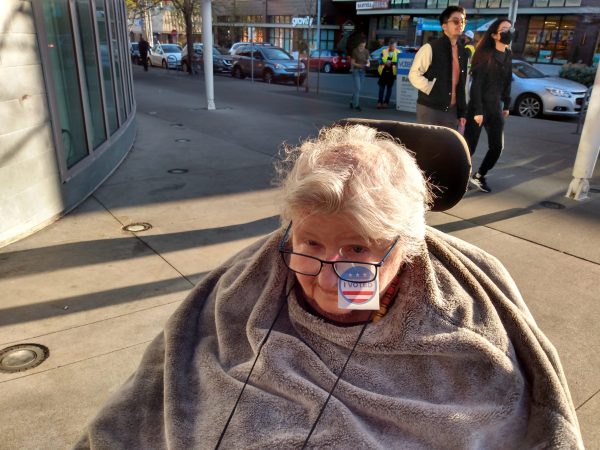
I voted. Library’s Ballot Box is City’s busiest, of course.
I love this next poem, because thinking IS most of my doing these days [plus the “actions” chronicled in my photos e.g. see below], so I know how much “doing the library” informs this poem. I just made it more explicit. And I love thinking about all the ways “being elastic” matters.
THINK AND DO by Ron Padgett
[ from Collected Poems. © Coffee House Press, 2013]
I always have to be doing something, accomplishing some-
thing, fixing something, going somewhere, feeling purposeful,
useful, competent—even coughing, as I just did, gives me the
satisfaction of having “just cleared something up.” The phone
bill arrives and minutes later I’ve written the check. The world
starts to go to war and I shout, “Hey, wait a second, let’s think
about this!” and they lay down their arms, go to the library, and ruminate.
Now they are frozen in postures of thought, like Rodin’s statue, the
one outside Philosophy Hall at Columbia. His accomplish-
ments are muscular. How could a guy with such big muscles be
thinking so much? It gives you the idea that he’s worked all his
life to get those muscles, and now he has no use for them. It
makes him pensive, sober, even depressed sometimes, and
because his range of motion is nil, he cannot leap down from
the pedestal, find questions in the stacks, and attend classes in Philosophy Hall.
I am so lucky to be elastic! I am so happy to have found the OED,
be able to think of the word elastic, and have it snap me back to underwear, which reminds me: I have to do the laundry soon, and the library sooner.
This last poem is perfect as is. Love of libraries fuels more than ⅓ of the lines. And they are great lines.
FIELD GUIDE by Tony Hoagland
[From Unincorporated Persons in the Late Honda Dynasty. © Graywolf Press, 2010.]
Once, in the cool blue middle of a lake,
up to my neck in that most precious element of all,
I found a pale-gray, curled-upwards pigeon feather
floating on the tension of the water
at the very instant when a dragonfly,
like a blue-green iridescent bobby pin,
hovered over it, then lit, and rested.
That’s all.
I mention this in the same way
that I fold the corner of a page
in certain library books,
so that the next reader will know
where to look for the good parts.
…………………………………………………
My challenge to the Poetry Clubbers was, after hearing the poems read aloud, to decide which poem had no amendments. Surely, my clever wordsmithing would be so smooth, someone would guess poem 1 or 2. But, no. Steve, the only guesser, chose, correctly, poem 3, “Field Guide” by Tony Hoagland, and made it worse by noting it had no library stuff “muckng it up” Well, ouch! [I may be mis-remembering his exact words, but not his clear intent, especially as the original poem had 5 of 13 lines about the library.] Sigh.

I point and puzzle. Library has a saran-wrapped hole in it. Why?
I had a great good time thinking about amendable poems. I have found that many, maybe most, of the poems I like are potential library-lover-poems, especially if they are read by a knowing person with sufficient, perfect “other” words and opinions, which, ahem, I am. Oh, the exciting possibilities for future blog posts!
……………………………………………………………………………………………………
The other news and part of the reason for this delayed post is that I was less peppy [“Not always a bad thing,” says Charlie.], but now I am peppier, thanks to antibiotics I took for an infection This is good, because it means my peppiness, apparently, is not related to the pill I have started taking in order to quell the papillary carcinoma [cancerous lump] in my left booby. A papillary carcinoma is uncommon or rare [.5 of 1% of breast cancers], so it should not quell my pursuits, just as my Arnold-Chiari, Type IIB diagnosis of 40 years ago did not quell them then. According to the biopsy report, my cauliflower-like tumor should respond mightily to the hormone therapy [Aromasin] my oncologists have prescribed, along with a year of their watching and imaging. Here’s to slow or no growth or spread!
I have some experience with dire news, and I say of this latest dose, “bring it on”, as I devour Dr. Google, do what Millie says, drive Charlie nuts and adapt, adapt, adapt.. I like to think of all of this as the “hopefulness coupled with curiosity” espoused by neuroscientist, David J. Linden in his just-in- time essay in the NYT, 3/18/23. Gloria Gaynor and a little “I Will Survive” is always good, too.
Time to quit fussing and post this news. I’m working on book bits and will post that fussed over melange soon. And I wrote two killer responses to my least favorite Poetry Club charge. Are they killer responses if only I think it? Is the thought as bad as the deed? Oh, the fun of a being a philosophy major.

